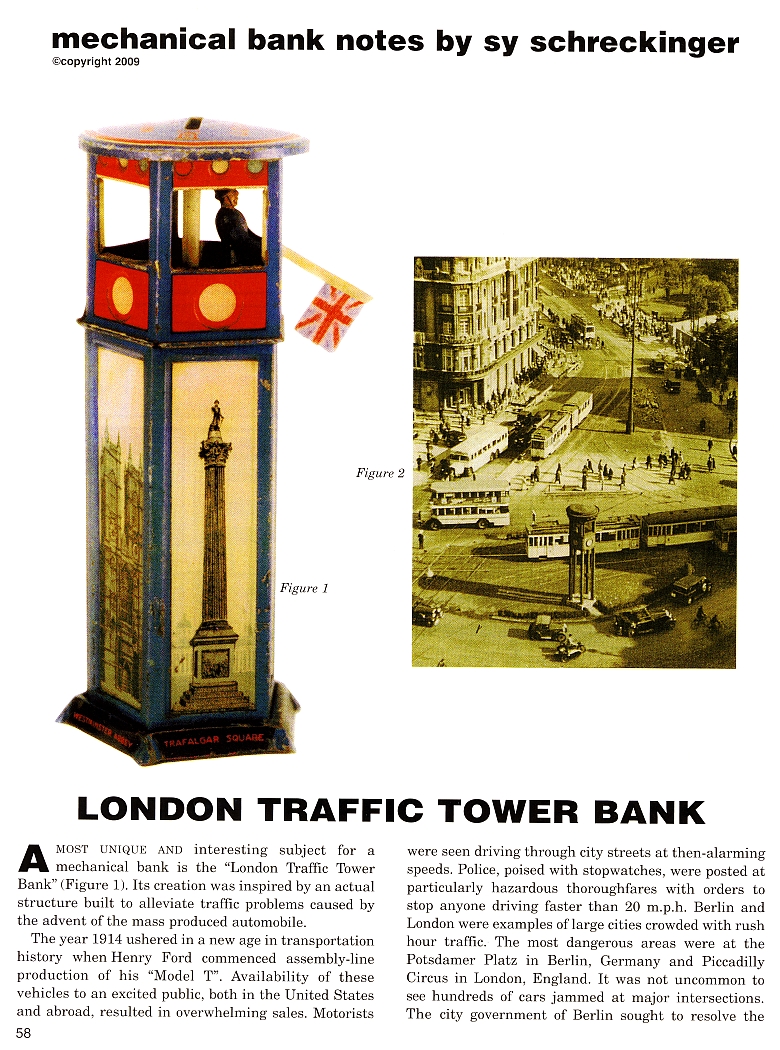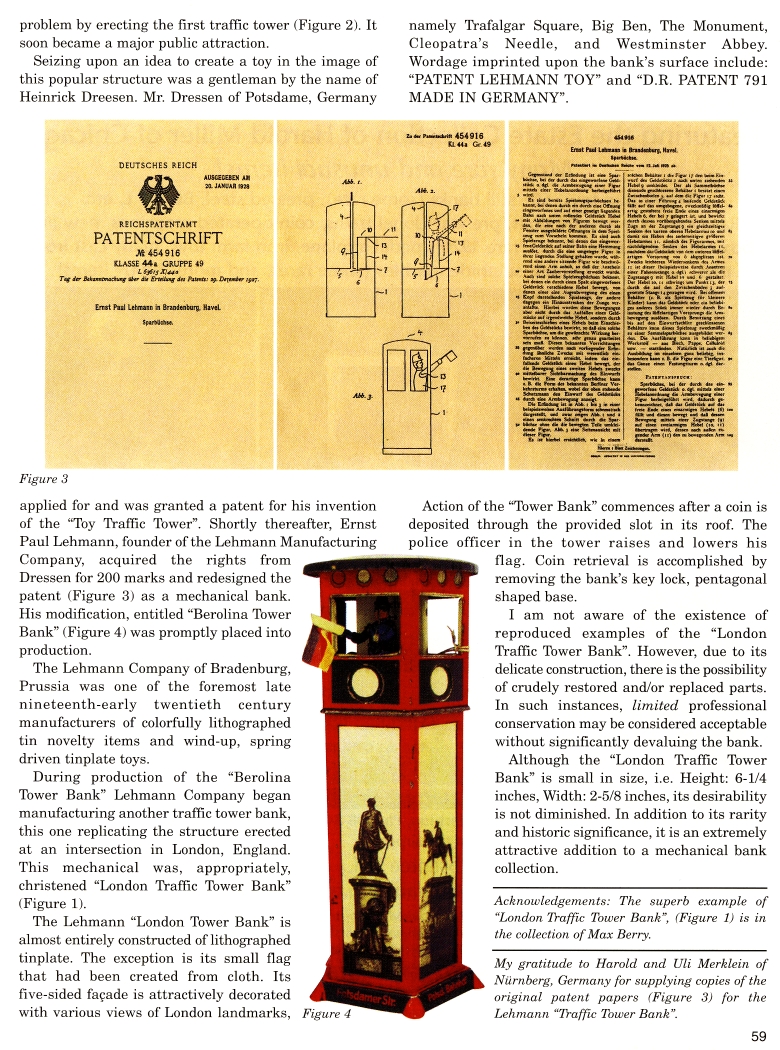|
London Traffic Tower Bank
by Sy Schreckinger – ANTIQUE TOY WORLD Magazine – September, 2009
A most unique and interesting
subject for a mechanical bank is the "London Traffic Tower Bank" (Figure
1). Its creation was inspired by an actual structure built to alleviate
traffic problems caused by the advent of the mass produced automobile.
The year 1914 ushered in a new age in transportation
history when Henry Ford commenced assembly-line production of his "Model
T". Availability of these vehicles to an excited public, both in the
United States and abroad, resulted in overwhelming sales.
Motorists were seen driving through city streets at then-alarming speeds.
Police, poised with stopwatches, were posted at particularly hazardous
thoroughfares with orders to stop anyone driving faster than 20 m.p.h.
Berlin and London were examples of large cities crowded with rush hour
traffic. The most dangerous areas were at the Potsdamer Platz in Berlin,
Germany and Piccadilly Circus in London, England. It was not uncommon to
see hundreds of cars jammed at major intersections. The city government of
Berlin sought to resolve the problem by erecting the first traffic tower
(Figure 2). It soon became a major public attraction.
Seizing upon an idea to create a toy in the image of
this popular structure was a gentleman by the name of Heinrick Dreesen.
Mr. Dresser of Potsdame, Germany applied for and was granted a patent for
his invention of the "Toy Traffic Tower". Shortly thereafter, Ernst Paul
Lehmann, founder of the Lehmann Manufacturing Company, acquired the rights
from Dresser for 200 marks and redesigned the patent (Figure 3) as it
mechanical bank. His modification, entitled "Hemline Tower Bank" (Figure
4) was promptly placed into production.
The Lehmann Company of Braderiburg, Prussia was one of
the foremost late nineteenth-early twentieth century manufacturers of
colorfully lithographed tin novelty items and wind-up, spring driven
tinplate toys.
During production of the "Berolina Tower Bank" Lehmann
Company began manufacturing another traffic tower bank, this one
replicating the structure erected at an intersection in London, England.
This mechanical was, appropriately, christened "London Traffic Tower Bank"
(Figure 1).
The Lehmann "London Tower Batik" is almost entirely
constructed of lithographed tinplate. The exception is its small flag that
had been created from cloth. Its five-sided facade is attractively
decorated with various views of London landmarks, namely Trafalgar Square,
Big Ben, The Monument, Cleopatra's Needle, and Westminster Abbey. Wordage
imprinted upon the bank's surface include: "PATENT LEMIANN TOY" and "D.R.
PATENT 791 MADE IN GERMANY".
Action of the "Power Bank" commences after a coin is deposited through the
provided slot in its roof. The police officer in the tower raises and
lowers his flag. Coin retrieval is accomplished by removing the bank's key
lock, pentagonal shaped base.
I am not aware of the existence of reproduced examples
of the "London Traffic Tower Bank". However, due to its delicate
construction, there is the possibility of crudely restored and/or replaced
parts. In such instances, limited professional conservation may be
considered acceptable without significantly devaluing the bank.
Although the "London Traffic Tower Bank" is small in
size, i.e. Height: 6-1/4 inches, Width: 2-5/8 inches, its desirability is
not diminished. In addition to its rarity and historic significance, it is
an extremely attractive addition to a mechanical bank collection.
Acknowledgements: The superb example of "London Traffic Tower Bank",
(Figure 1) is in the collection of Max Berry.
My gratitude to Harold and Uli Merielein of Nurnberg,
Germany for supplying copies of the original patent papers (Figure 3) for
the Lehmann "Traffic Tower Bank".
|


